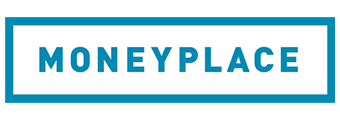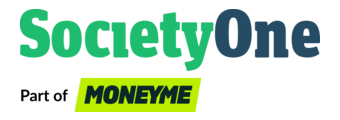
- Range: Both Experian and Illion use a scale of 0 to 1,000, while Equifax uses a scale of 0 to 1,200.
- Categorisation: Each agency categorises credit scores into different levels, indicating the risk of adverse credit events, with some variation in interpretation between the agencies.
- What it means: A score is your creditworthiness as a borrower. Those with low scores may face higher interest rates or higher fees.
- What to do: If your score is low, you can build it back up by repaying debts on time and playing the waiting game before applying for more credit. You can check your report for free once per year, and check up on your score a lot more often.
An excellent score is anywhere between 833 and 1,200 (if you're using Equifax) or between 800 and 1,000 with Experian and illion. A good score is anywhere from 500 to 800 and a poor score is usually below 400. A poor score doesn't necessarily mean you have a bad credit history, though; it may simply be that you've never really had any credit. Changes in 2014 may provide a better outcome if you’ve never had credit before - more on this later.
|
Equifax |
Experian |
illion |
|
|---|---|---|---|
|
Below Average |
0 to 509 |
0 to 549 |
0 to 299 |
|
Average |
510 to 621 |
550 to 624 |
300 to 499 |
|
Good |
622 to 725 |
625 to 699 |
500 to 699 |
|
Very good |
726 to 832 |
700 to 799 |
700 to 799 |
|
Excellent |
833 to 1200 |
800 to 1000 |
800 to 1000 |
Whichever credit reporting agency you use to get your credit rating, that rating comes from an assessment of your financial history. Your history is made up from all your credit cards, personal loans, home loans, and overdrafts and how you've handled them over the years. Even things like your utility bills and mobile phone contracts count towards your score and rating as they demonstrate how you handle your money and credit.
| Fixed | Unsecured | N/A | More details | ||||||||||
| FEATURED | Unsecured Personal Loan (Excellent credit) (5 Years)
| ||||||||||||
Disclosure | |||||||||||||
Unsecured Personal Loan (Excellent credit) (5 Years)
Disclosure
| |||||||||||||
| Fixed | Unsecured | N/A | More details | ||||||||||
| FEATURED | No Fee Personal Loan (5 Years)
| ||||||||||||
Disclosure | |||||||||||||
No Fee Personal Loan (5 Years)
Disclosure
| |||||||||||||
| Fixed | Unsecured | N/A | More details | ||||||||||
| FEATURED | Low Rate Personal Loan Unsecured ($5k-$100k) (5 Years)
| ||||||||||||
Disclosure | |||||||||||||
Low Rate Personal Loan Unsecured ($5k-$100k) (5 Years)
Disclosure
| |||||||||||||
| Fixed | Unsecured | N/A | More details | ||||||||||
Unsecured Personal Loan - Excellent Credit (5 Years) | |||||||||||||
| Fixed | Secured | N/A | More details | ||||||||||
Secured Loan (5 Years) | |||||||||||||
| Fixed | Secured | N/A | More details | ||||||||||
IMB Secured Personal Loan (5 Years) | |||||||||||||
| Fixed | Unsecured | N/A | More details | ||||||||||
Unsecured Personal Loan (Excellent Credit) (5 Years) | |||||||||||||
| Fixed | Unsecured | N/A | More details | ||||||||||
Low Rate Personal Loan (Excellent Credit) (5 Years) | |||||||||||||
How is your credit score calculated?
Your credit score is calculated by using the information on your report, as well as a number of factors that look at your risk as a credit-user. These factors include:
-
The type of provider, as different lenders have different risk levels and bandings, as well as different risk appetites
-
How much you're looking to borrow, as the size of the loan, credit card limit or overdraft will affect your overall score; mortgages are assessed differently, however, due to their size
-
The number of credit enquiries you make, as every time you apply for credit, providers get your file and the application is noted on it. If you've been making several applications within a short period of time, it may mean you're under financial stress and therefore present a larger risk to lenders
-
Any directorship information, as owning or running a business or company can affect your credit score; you need to look at both your personal and your business credit reports
-
The age of your file, as newer files are deemed to be less "proven" than older ones
-
Your personal information; agencies will look at your age, how long you've been in employment and how long you've been at your current address to see how stable you are.
-
Any adverse events as serious credit infringements, court judgements and defaults, as well as missed payments, will hurt your score.
Contrary to popular belief, transaction data is not scrutinised - that’s your money. As the name suggests, a credit score is measured on your ability to repay credit items. However, in 2021 illion introduced a Transaction Risk Score, which more closely scrutinises cash use patterns. Filling up a full tank of fuel for years then suddenly filling up with half a tank? That could give rise to concerns a financial headwind is afoot.
Lenders also have their own particular criteria for potential borrowers, so you don't need to take your credit report as gospel. Further, credit scores are typically more important when it comes to applying for unsecured debt - think personal loans and credit cards. Secured debt, such as car loans and home loans, may be less-so as the nature of the debt is slightly less risky.
What does a credit score and report actually mean?
Your credit score is a snapshot of the risk of an adverse event going into your file in the next year. Adverse financial events include missed or late payments, defaults and even court judgements and bankruptcies.
The higher your score, the less likely you are to have an adverse event in the next 12 months. This means that lenders are more likely to extend credit to you and extend it on good terms and interest rates.
A lower score doesn't mean you won't be able to borrow money (although very poor ratings may mean this), but you may face higher interest rates or have to pay deposits on any credit agreements you enter into.
In addition, don’t fret if you don’t have an excellent credit score - they are typically hard to achieve. They are usually reserved for older Australians in higher income bands who have a long history of credit, and/or those who have paid off their home loan.
Experian
-
0 to 549: Below Average - It's more likely that an adverse event, such as a default, court judgment, or insolvency, will be recorded on your credit report in the next 12 months.
-
550 to 624: Average - It's likely that you will incur an adverse event in the next 12 months.
-
625 to 699: Good - Less likely to experience an adverse event on your credit report in the next year.
-
700 to 799: Very Good - Unlikely to have an adverse event recorded in the next 12 months.
-
800 to 1,000: Excellent - Highly unlikely to have an adverse credit event in the next year.
Illion
-
0 to 299: High Risk
-
300 to 499: Medium to High Risk
-
500 to 699: Medium Risk
-
700 to 799: Low to Medium Risk
-
800 to 1,000: Low Risk
Equifax
-
0 to 509: Below Average - More likely than the average population to experience adverse events in the next 12 months.
-
510 to 621: Average - Likely to experience an adverse event in the next year.
-
622 to 725: Good - Less likely to have an adverse event recorded in the next year.
-
726 to 832: Very Good - Unlikely to experience an adverse credit event in the next 12 months.
-
833 to 1,200: Excellent - Highly unlikely to have an adverse event in the next year.
Credit Score vs Credit Report
It’s useful to think of the report as the beating heart, and the score as the blood pressure. Blood pressure can go up or down depending on what’s in the heart - the report.
A report is an in-depth document detailing credit inquiries, applications and approvals or rejections for credit, repayment history, defaults, debt agreements and bankrupcties. A score is your reflection of that.
What is comprehensive credit reporting?
Comprehensive credit reporting was introduced in early 2014 as a way to give lenders a better picture of potential borrowers. It records positive information as well as adverse events, so lenders can see your best side as well as your occasional mistakes. It's fairer and it also offers away to improve your score, by paying your phone bill on time every month, for example.
How to check your credit score and report
You can obtain your credit score by applying to one of the main agencies, like Experian, Equifax or Illion. You can get one free report a year, so you should use this opportunity to check your rating to make sure it's accurate.
It’s worthwhile checking your credit report once a year or so, keeping in mind this too will appear on your report. Should you notice any errors it’s important to get in touch with the agency right away.
On the other hand, you can check your credit score a lot more often. The three agencies all own their own credit score checkers, and many banking apps - such as CommBank’s - give you an insight into your credit score.
How to improve your credit score
There are lots of ways in which you can improve your score, even if you're already in the "excellent" banding. The easiest way to bring your score up is to make sure you pay all your bills on time and work to reduce your existing debts, whether they're credit card balances, overdrafts or loans.
Thanks to comprehensive credit reporting, you can be rewarded for good financial behaviour nowadays. Even simple things like paying off your phone and electricity bill on-time can help.
How long do items stay on your credit report?
The most amount of time something stays on your credit report is seven years - and that’s for serious infringements. If you have a patchy history, or even a bankruptcy on your name, it’s important to get on top of your debts and ultimately play the waiting game before applying for more credit.
|
Bankruptcy |
The later of:
|
|
Court judgment |
5 years |
|
Credit enquiry |
5 years |
|
Current consumer credit obligations |
2 years (from the end of the consumer credit) |
|
Debt agreement |
The later of:
|
|
Default |
5 years |
|
Financial hardship information |
1 year |
|
Repayment history |
2 years |
|
Serious credit infringement |
7 years |
Source: oaic.gov.au







